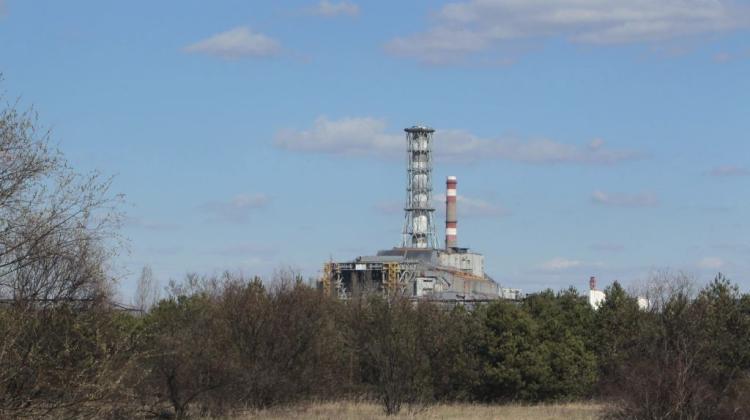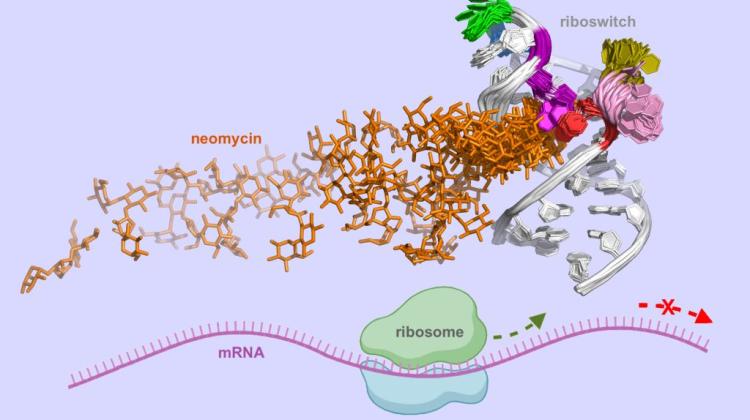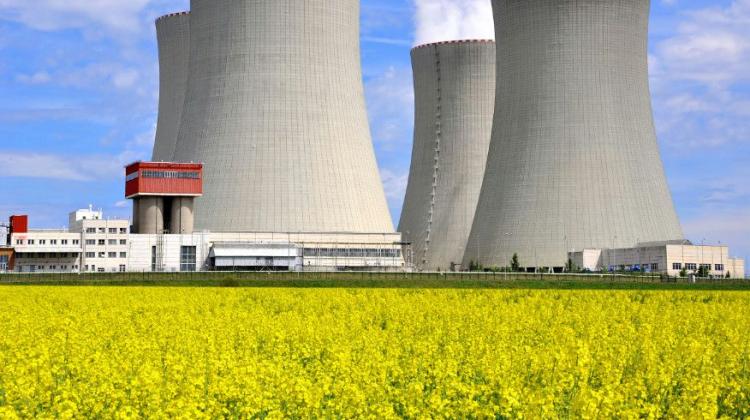Biologists: The forest around Chernobyl is a great laboratory
 PAP/EPA © 2016 / SERGEY DOLZHENKO
PAP/EPA © 2016 / SERGEY DOLZHENKO
The area around Chernobyl is a great laboratory for studying the evolutionary response of animals and plants to the elevated level of radiation - said in an interview with PAP biologists from the US and France, who have been studying exclusion zone around Chernobyl.
Failure of reactor number 4 in Chernobyl, which occurred 30 years ago (on 26 April 1986), sent a plume of highly radioactive fallout into the atmosphere and over a large part of the northern hemisphere. While in most places the radiation level did not change significantly, in the vicinity of the plant itself there are places where it is still strongly elevated. Such places are of interest to evolutionary biologists.
According to Anders Pape Møller, biologist from the Université Paris-Sud XI, France, who has been working around Chernobyl since 1991, it\'s a very interesting place, because it allows to study mutations occurring in organisms living in a vast area of thousands of square kilometres. Scientists can observe populations of birds, mammals, invertebrates, plants, and study bacteria. In most of these groups of organisms they find clear evidence of the presence of reaction of organisms to doses of radiation. It is also clear that organisms react worse in areas with higher radiation levels.
Tim Mousseau from the University of South Carolina, who has been studying the exclusion zone with Møller since 2000, added that researching the response of organisms to radiation on such a scale as offered by the Chernobyl area would not be possible in any laboratory
Within the "zone", evolutionists are interested in the effects of radiation on various organs, mechanisms and processes: survival and reproduction of birds, the sex ratio in their populations, the size of brains in birds and voles, the incidence of tumours, interactions between pollinating insects, plants, fruits and fruit-eating animals, and even symmetry of spider webs. They study the effects of radiation on the viability of pollen, seed germination, plant growth and wood decay processes.
Mousseau and Møller are checking whether animals have adapted to high levels of radiation and whether they can deal with it. Mousseau commented that when they started their research, many generations of birds and insects had passed since the moment of the disaster. This means that evolution had a lot of time to develop a reaction to higher radiation. The first question was: can animals adapt to the stress of radiation.
He explained the eggs of birds and insects contain compounds that are useful, for example, when combating bacterial infections (such as antibiotics). Built into the structure of the eggs are also antioxidants that may help protect against radiation. Mousseau believes that this kind of response from the mother could evolve in the Chernobyl populations to help the animals cope with an increased radiation.
Møller and Mousseau report that they have found abundant evidence of damage to the genetic material of organisms (such as changes in DNA), which may lead to the formation of tumours, growth slowdown and other irregularities. Knowing that people exposed to radiation often develop cataract, researchers started to search for similar reactions in birds and mice. They found that they also develop cataract in response to radiation. Mousseau added that at the same time, male birds and mice, particularly those living in more radioactive areas, have reduced fertility. They produce less sperm, or do not produce it at all, and behaviour of their sperm changes, hindering the performance of its role.
Biologists gathered considerable amount of data on birds. Their study of 550 birds caught in the nets shows that the brains of these animals - living in the contaminated areas around Chernobyl - are 5 percent smaller than those in other regions. Sex ratio is changed among birds; they also sing less. The researchers also found that particularly vulnerable to radiation damage are birds that migrate over long distances and have colourful, bright plumage.
Biologists say that the changes in the environment did not affect all species, but generally in the area with the highest level of radiation the numbers of birds and butterflies suffered the most. Wild animals and plants with irregularities (cataracts, tumours or microcephaly) are rare, because due to defects they quickly fall prey to predators. Therefore, such individuals disappear, and their percentage in the population decreases rapidly, Møller explained.
Mousseau pointed out that at first glance the forest in the exclusion zone around Chernobyl, does not particularly stand out. A layman person who knows the typical forest plant and animal species might not even notice anything unusual. However, a biologist who has a special perspective: uses of scientific methods, can count the animals, will clearly see that there is more than meets the eye, he said.
Among the changes visible to the naked eye, the biologist mentioned the unusual shapes of trees in the most radioactive areas, for example twisted pine trees. When it comes to birds, there are many with tumours. A random ringer, who sees a lot of birds, asked if he has ever seen a bird with a tumour, would probably say one or two. In the contaminated area researchers have seen a lot of them.
At the end of 2014, the media reported that wild life thrives in the exclusion restricted zone of Chernobyl, and the woods abandoned by people are full of wild boar, deer, wolves, elk, and foxes. According to biologists, the abundance of animals does not necessarily mean that the irradiated area is beneficial for animals. The only thing that can be said with certainty is that the population is growing due to lack of hunting. But there is no clear link between this increase in the number of animals near Chernobyl and radiation levels, Mousseau noted.
While there are large mammals in the area, it is not clear whether their numbers are higher than should be expected. The populations of large mammals grow in many places in Europe, including Poland. Is an increase in their numbers in Chernobyl correspondingly larger than elsewhere? Past observations do not allow to say whether or not wolves or other large animals that live in more polluted surroundings accumulate more mutations. The results clearly indicate that there are more animals in those places where the radiation is weaker. Animals clearly avoid the most contaminated sites, Møller commented.
Speaking about the importance of studying the effects of radiation, Tim Mousseau suggested that in the future, and there is a "likelihood of accidents and even nuclear terrorism". Taking this into account, it is very important that scientists learn as much about as possible about the impact of associated pollution on the environment, both in terms of combating the effects of potential accidents as well as risk assessment based on evidence, and shaping the energy policy, he said.
He added that radioactive contamination comes not only from historical accidents, but from the whole cycle of uranium, from its extraction to the storage of used fuel. He emphasised that while this kind of pollution means specific consequences for the environment, it has never been studied in detail.
He noted that regardless of whether you are a supporter or opponent of nuclear power - it already exists, and will remain with us for years. There are more than 400 nuclear reactors in the world today, 65 more are being built and further 165 are planned. In his area in the US there are four new reactors, which he can almost see through the window. Regardless of what we think about them, we need to know more, so that we can prepare for possible contamination associated with this type of technology - just like for other pollutants associated with other types of energy production technology.
PAP - Science and Scholarship in Poland, Anna Ślązak
zan/ mrt/
tr. RL
Przed dodaniem komentarza prosimy o zapoznanie z Regulaminem forum serwisu Nauka w Polsce.















